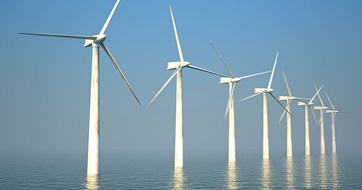Out-Law / Your Daily Need-To-Know
Out-Law News 2 min. read
Crown Estate launches leasing round for 7GW of UK offshore wind

19 Sep 2019, 4:03 pm
During Offshore Wind Leasing Round 4, developers will be able to bid for suitable sites in one of four 'bidding areas' identified by TCE: Dogger Bank; East Anglia; south east England; and Northern Wales and the Irish Sea. TCE has published maps of each of the four areas, along with supporting information and other documentation.
TCE's three-stage tender process will run until autumn 2020 with new seabed rights expected to be awarded from early in 2021, subject to the outcome of a Habitats Regulation assessment (HRA). TCE will hold an information day on 9 October, to provide potential leasing round participants and their advisers with a detailed overview of the process.
We expect significant interest in the opportunity to bid for these future projects and also for the equivalent Scottish offshore wind leasing round, ScotWind, which is expected to be launched later this year.
Renewable energy expert Alan Cook of Pinsent Masons, the law firm behind Out-Law, said that the launch "marks the next generation of offshore wind projects in the UK".
"We expect significant interest in the opportunity to bid for these future projects and also for the equivalent Scottish offshore wind leasing round, ScotWind, which is expected to be launched later this year," he said.
"These projects will be important contributors to the UK's clean energy generation needs and the drive towards a zero carbon economy. Importantly, the cost of offshore wind has been dropping steadily in recent years - something we will see reflected in the outcome of the bidding for Contracts for Difference to support the current set of ready-to-build projects, announced on 20 September," he said.
Developers seeking to lease seabed managed by TCE for new offshore wind projects will be subject to a three-stage tender process. This will consist of a pre-qualification stage (PQQ); followed by a two-part invitation to tender stage (ITT1 and ITT2).
Potential bidders will first be assessed on their technical competence including project management, access to grid connection and consenting and financial strength at PQQ. The bids of developers which pre-qualify will then be assessed at ITT 1 based on project-specific financial and technical assessments. Projects that pass ITT1 will move on to ITT2, at which awards will be made based on the option fee proposed by the bidder.
Developers will be able to identify and propose their own project sites within the four areas identified by TCE, informed by published data and analysis. They will be encouraged to incorporate technological innovations within their projects, and permitted to propose 'hybrid' projects which integrate offshore wind with interconnection or other energy generators. Successful bidders will be awarded 60-year leases, up from the 50-year lease originally proposed.
TCE will require successful bidders to collate and share project surveys and data and to participate in sector benchmarking schemes as part of the lease agreement. It intends to use the data collected to drive continued improvements and to monitor the cumulative impact of offshore wind deployment on the marine and onshore environments, among other research.
Huub den Rooijen, TCE's director of energy, minerals and infrastructure, said: "Round 4 projects will take the UK sector from strength to strength, delivering clean, affordable, home-grown electricity and joining a robust pipeline of projects in UK waters, which together will deliver a fourfold increase in operational offshore wind capacity by 2030".
Currently, 9.3GW worth of offshore wind generating capacity is operating in UK waters, with 4.4GW under construction and a further 20GW of projects in the development pipeline.
